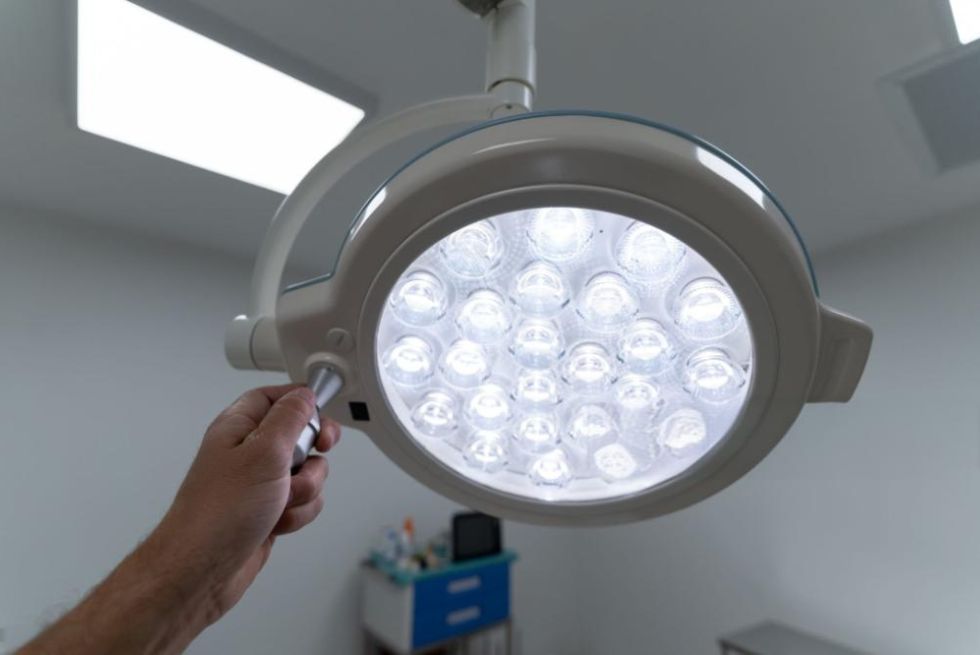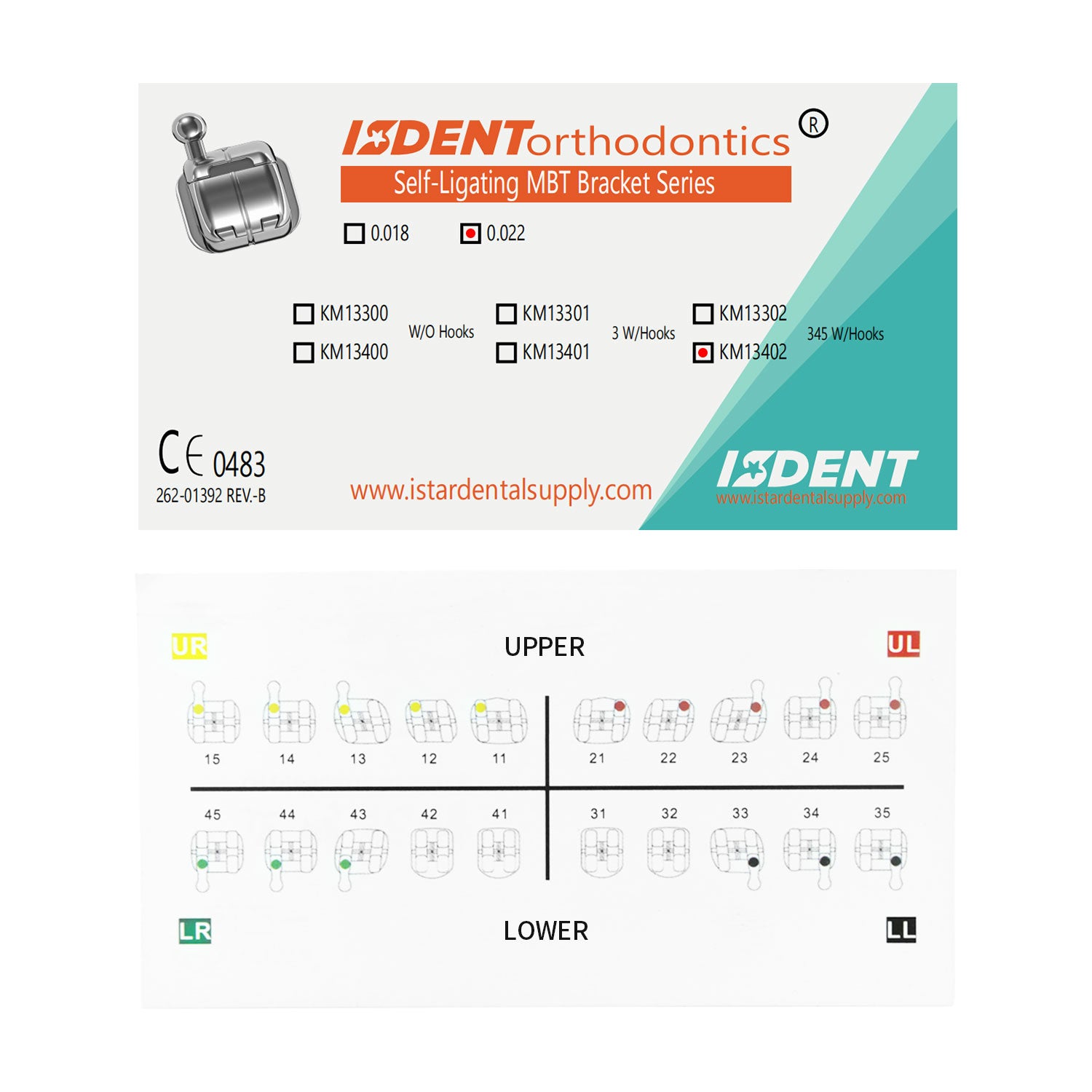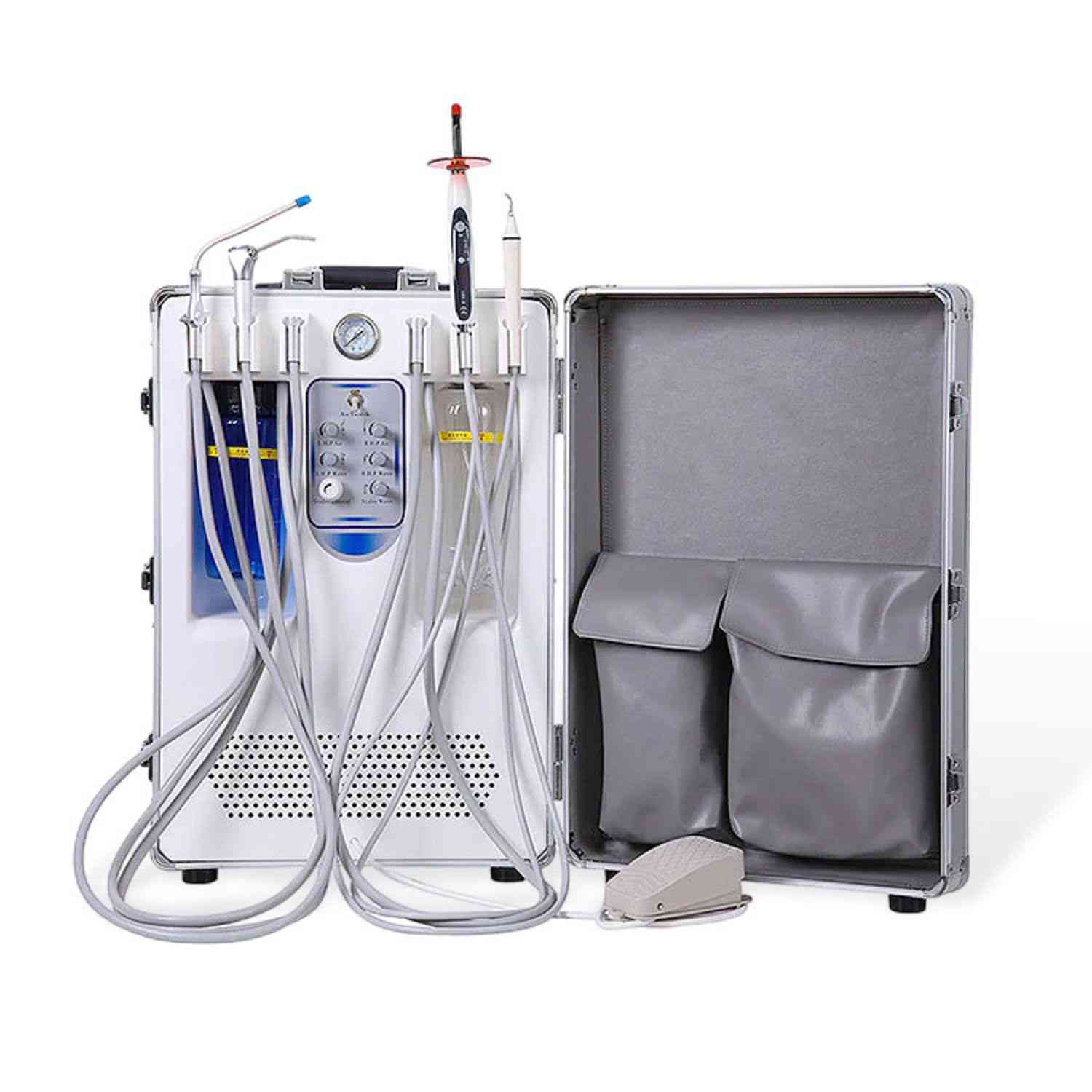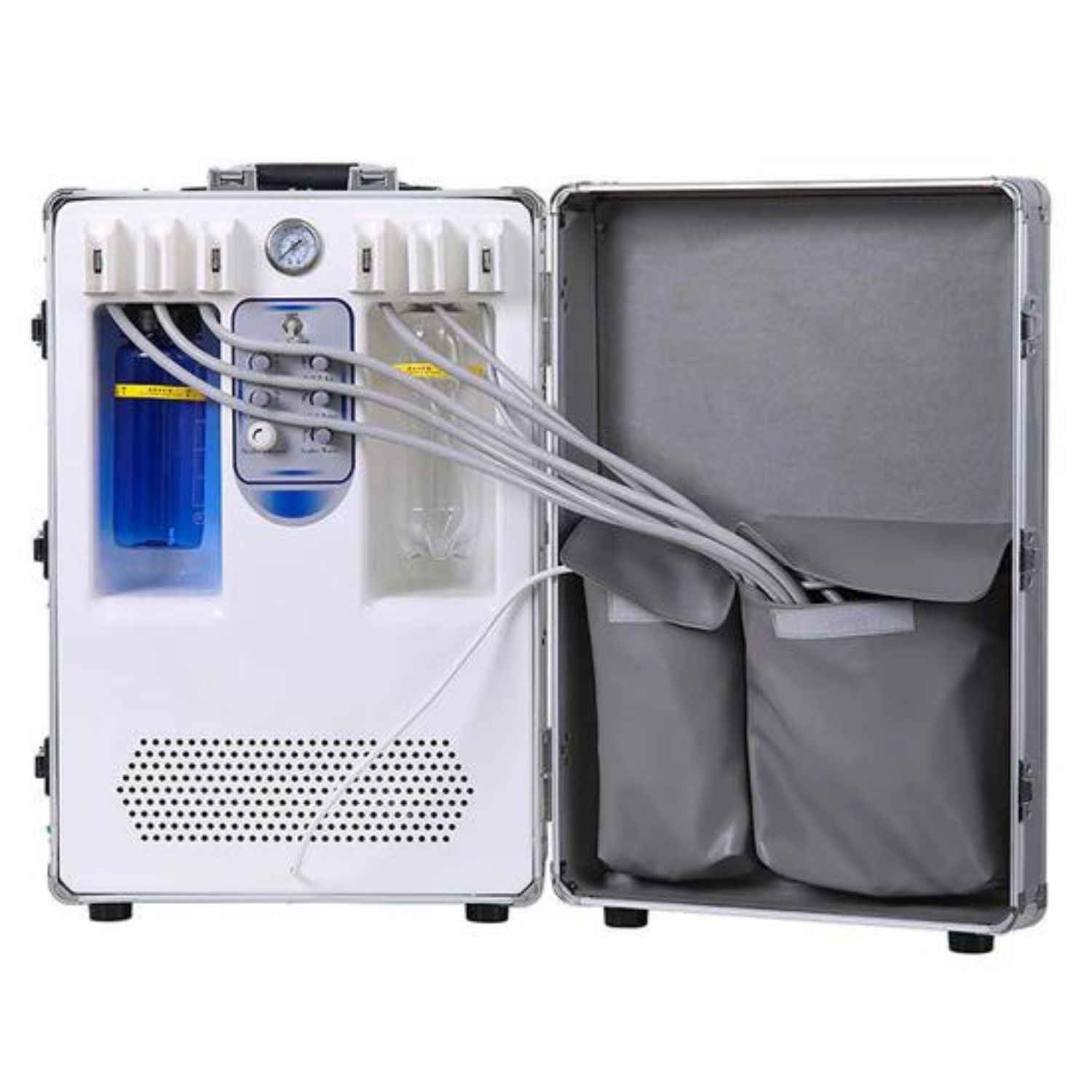Light Installation in the Operating Room: A Comprehensive Guide to Ceiling Surgical Lighting Requirements and Construction
Today, I want to share an article about a crucial process that significantly enhances patient care and safety within any medical facility: light installation in the operating room. This blog will walk you through the installation of operating lights, explore the importance of proper ceiling design, and highlight which requirement factors matter most when handling construction for surgical light installation. If you are a dentist, a manager at a dental clinic, in a dental hospital, or part of a dental school, read on to discover how these insights can support your facility’s success. Plus, you will better understand how ISTAR Dental Supply’s professional approach—and our role as a dental supply manufacturing plants for products—can meet your need for high-quality solutions. It’s well worth reading because the right light under the correct structure is essential to guarantee safe surgical interventions, minimize damage risk, and achieve full illumination.

1. What Is the Importance of Proper Light Installation in the Operating Room?
When we talk about the operating room, it’s critical to highlight the importance of purposeful illumination. The ability to see tissues and structures clearly can make the difference between success and complications.Thus, having the right light, properly installed, is not just a simple detail—it is an absolute requirement for optimizing outcomes in any medical setting.
Surgical lighting is more significant than merely flipping a switch on a bright lamp. It is about structure, design, technology, and ensuring a well-planned installation that stands the test of time. With advanced equipment emerging every day, modern surgeries demand lighting that’s adjustable, bright, and free of glare or harmful heat. That is why ongoing construction projects for advanced operating rooms place a major focus on ceiling design and methods to install the light with precision.
2. How Does Ceiling Surgical Lighting Impact Medical Facility Efficiency?
In my experience working with various facility types—particularly dentist offices, dental labs, and dental hospitals—I have seen how ceiling surgical lighting can improve productivity. When you incorporate a specialized light array that can be maneuvered easily over the operating room table, you reduce the time spent adjusting lesser-quality fixtures.
Additionally, correct light positioning in the operating room ensures the surgical team avoids unwanted shadows and obtains the clarity they require to prevent potential damage to patients. Properly planning the installation process also elevates staff confidence. If you consider how surgical lights must follow strict regulations, you’ll see how essential thorough planning and professional installation is to keep everything fully functional and code-compliant.
3. Which Requirement Factors Guide the Installation Process?
Before you begin, you have to identify the main requirement factors that shape the installation process. Foremost is the height of your ceiling. This matters because the diameter of the mounting structure—and the bolt sizes used—must match up with the load that the installation will place on the roof of the operating room.
Secondly, the process calls for you to determine if the structure can bear the weight of the light. You can rely on structural engineers, or other professional teams, to measure thickness or confirm if a steel beam is in place to help fix the mount. Because the installation of operating lights inevitably deals with overhead beams, coordinating with a facility manager is vital.
Lastly, your local building codes or clinical rules might impose a requirement to confirm the construction materials used for a ceiling or wall meet certain standards. Sufficient information on these codes is often available from local authorities or from xyc medical resources, ensuring your plan remains in accord with recognized guidelines.
4. Why Does the Structure of the Ceiling Matter in Construction?
The ceiling structure is the backbone that supports the entire assembly of your surgical lighting. A shaky overhead mount could fall mid-operation, leading to catastrophic damage. That is why load-bearing capacity is a crucial element. During new building or renovation, a cross-check of the crossbeam structure is necessary to ensure the light can be safely suspended.
Professional installers typically measure the full shape of any overhead beams, check the square dimension of connecting areas, and confirm the nut and bolt attachments are firmly in position. They also check if it’s possible to connect the light fixture through a stable steel plate or bracket. The thickness and diameter of mounting hardware can vary, so verifying that your overhead structure can fix the fixture is essential.

5. What To Know About the Installation of Operating Lights?
When it comes time to install the light, thorough preparation can help you avoid surprises. Surgical light installation is a multi-step process requiring accurate measurements and material selection. Because every facility differs in construction, you have to ascertain the right anchor points in the ceiling.
Here’s where creating an order or sequence of tasks helps. Start by reviewing relevant information about the building specs, compile the following data need:
- Every blueprint detail on the overhead crossbeams.
- The weight range that the ceiling can carry.
- The size and kind of bolt that suits the overhead structure.
- The location of air ducts or water piping that might cause complications.
Double-check that your chosen mounting material and brackets can withstand a load rating equal to or exceeding the recommended figure. This approach helps you avoid the normal pitfalls that come with hooking up new ceiling surgical fixtures.
6. How To Safely Install the Light Step by Step?
When you are ready to install the light, the installation steps typically look like this:
- Plan the exact mounting location: Mark the overhead wall or side area that aligns with your height and coverage needs. This is where you measure and drive in the bolt anchors according to your specs.
- Assemble the fixture and bracket: Secure the fixture’s main plate and supporting arms with the correct nut and screw sets. This helps attach the fixture properly to the steel mount.
- Fix the assembly to the crossbeam or support bracket: If there is no existing crossbeam, you might need a custom bracket or specialized construction method in the ceiling. Use strong hardware so the fixture remains stable.
- Electrical Connection: Connect the wiring in accord with professional in-house standards. Double-check that no cables or circuits are left without proper grounding.
- Testing: Switch on the fixture, rotate it, do a final stability check, and confirm that the illumination is bright and consistent from every angle.
By following these five steps, you can ensure your operating room is equipped with a stable and high-performance light fixture. Keep in mind, a rigorous testing regimen is required to confirm that the fixture can handle movement and remain stable.
7. How ISTAR Dental Supply Supports Professional Surgical Light Installation?
Here at ISTAR Dental Supply, we excel at manufacturing and delivering top-tier solutions for dentists, dental clinics, and more. We partner with skilled engineers and specialized professional installers to bring you overhead surgical lighting solutions that can be installed easily in your operating room environment—for instance, in specialized dental surgeries or in hospital-based ORs.
We not only provide the hardware but also make sure that each light is built to hold up under rigorous use. Our vantage point from running manufacturing plants for products means that we are intimately familiar with quality standards, and we only recommend products that pass exacting tests. In addition, we support you through consultation calls, offering direct help to determine what height and shape fixture best suits your facility.
If you’re searching for a robust overhead fixture, check out our Ceiling Mounted Surgical Light or our Portable Surgical Light. We also have a range of Shadowless Surgical Light options for advanced clarity. These solutions can help you meet the common codes and requirement guidelines in any building or specialized construction environment.

8. What Common Material and Equipment Mistakes Should Be Avoided?
I have often seen mistakes like using too-thin anchors or ignoring the load-bearing capabilities of the ceiling or the overhead structure. When bigger overhead fixtures are suspended, a subpar material can lead to serious hazards. If the bolt is not the correct diameter, it may loosen over time.
Another(1) typical pitfall is failing to measure the right height or ignoring the thickness of a steel beam, which leads to sloppy installation. If you don’t fix the fixture properly, you risk the fixture becoming dislodged. This not only damages the equipment but endangers the entire surgical team. Skilled professionals recommend verifying the location of every overhead crossbeam and ensuring that the hardware is properly torqued to the manufacturer’s specifications.
It’s wise to invest in specialized Dental Light solutions that come with manufacturer instructions that walk you through each step. Our curated lineup of safe, performance-focused overhead lights helps you address these potential pitfalls pragmatically.
9. Which Additional Construction Considerations Should We Plan For?
In addition to the basics of light suspension, your facility might incorporate advanced HVAC or specialized ventilation to keep the operating room environment sterile. A carefully designed ceiling that accommodates these features is important. Doing that, you’ll achieve synergy between airflow, the surgical table, and overhead illumination.
Furthermore, consider future expansions. If your facility might need to add more advanced technology later, factor that possibility into your construction blueprint. For instance, you want to leave an easy path for new cables or additional lights. That’s also where a specialized Dental Chair or Medical Grade Air Purifier comes into play. By planning for expansions, you’ll be able to keep updating your OR to the latest trends, all while preserving the safety and reliability of your overhead lighting.
10. Real-World Case Study: Success Through Proper Planning and Technology
Let me share a quick real-life illustration of how methodical planning fosters success: A mid-size dental facility was updating its small operating room to accommodate complex dental surgeries. The first(2) step was to consult a structural engineer to measure how the ceiling crossbeams could handle the newly chosen fixture’s full weight load. After verifying the structure was engineered to hold the upgraded light, the team proceeded with the final installation.
This scenario revealed that the overhead beam length was slightly longer than standard, so the recommended approach was to add an additional steel mounting bracket. The team carefully utilized the correct diameter of bolt and performed repeated checks to ensure the fixture wouldn’t shift on any side. Because the ceiling is completed with high-grade materials, the new fixture was installed seamlessly. Combined with advanced technology in the fixture itself, the practice saw a marked improvement in surgical speed and outcomes within just a few months.
In the end, the synergy between planning, stable overhead structure, and robust construction made all the difference. That’s the reason behind this entire article—to highlight how well-structured light installation can set you up for ongoing success.
Frequently Asked Questions
Is it difficult to install the light in a low-ceiling facility?
It can be tricky to work with low clearance, but not impossible. You can reorder your mounting approach or rely on specialized arms that accommodate the compact area. Always consult a professional if you’re in doubt.
How do I handle the wiring part in a ceiling surgical setup?
We always suggest that you connect the wires in accord with local codes, typically working with a certified electrician. They’ll verify that the fixture is grounded properly and that you follow the guidelines that keep staff and patients safe.
Should I wait until the operating room walls are complete before installing the lights?
Ideally, the overhead fixtures go up after the full structural elements are in place so that the mount does not shift. However, you can carefully begin as soon as your structure is stable, your overhead crossbeams are properly set, and the wall finishing does not interfere with the installation.
Which part of the process can cause the biggest delay?
Scheduling, especially if you need to coordinate with structural engineers, can be the most time-consuming part. Additionally, verifying that the correct bolt sizes and brackets have arrived can impede timely progress.
What if my building code changes after I’ve installed everything?
In this situation, contact your local inspector for the best route forward. You may be granted a grace period or you might need to do a partial remodeling. It’s always wise to keep up to date with codes to avoid rework.
Can I perform installation without a professional contractor?
It’s theoretically possible, but not advised unless you have industrial or structural experience. Because overhead fixtures involve a lot of details—like beam thickness, plate alignment, cable routing, etc.—you really minimize risk by working with a specialized contractor or an experienced in-house team.
A Quick Visual: Ceiling Mounted Surgical Light
Alt="Ceiling Mounted Surgical Light from ISTAR Dental Supply"
Bullet Point Summary: Key Takeaways
- Surgical lighting in an operating room is a crucial requirement for safe and effective procedures.
- Installation depends heavily on structure integrity, the ceiling design, and the crossbeam construction.
- Following local codes is essential. Professional guidance helps confirm that all steps from planning to final checks come off without a hitch.
- Carefully confirm your chosen bolt sizes, mounting plate diameter, and load capacity so you can fix the fixture securely.
- ISTAR Dental Supply focuses on providing top-notch equipment for ceiling-mount solutions. Check out our Shadowless Surgical Light and Ceiling Mounted Surgical Light to find the best fit.
- Good planning at the first stage ensures minimal downtime, improved illumination, and a streamlined environment for both staff and patients.
In conclusion, a well-researched surgical light installation offers improved performance and peace of mind to both clinicians and patients. Because surgical lights must meet high standards, it is best to install the light with the support of verified experts and reliable product lines, such as those we provide at ISTAR Dental Supply. We stand ready to help you make your facility safer and more efficient for better patient outcomes.
I hope this thorough overview clarifies the importance of robust overhead lighting for your practice. Whenever you are ready to begin your installation process, we enthusiastically recommend connecting with us for more information and direct guidance. If you want the full benefits of advanced overhead lighting solutions, we are here to help—get in touch today!







